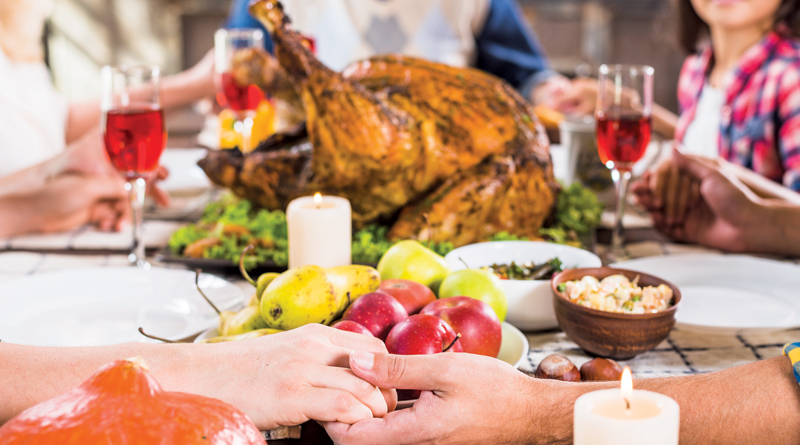IS THANKSGIVING BECOMING A LOST HOLIDAY?

The New-England Boy’s Song about Thanksgiving Day,” also known as “Over the River and Through the Wood,” is a Thanksgiving poem by Lydia Maria Child, originally published in 1844 in Flowers for Children, Volume 2. And although most people sing “to grandmother’s house we go,” the author’s original words were “to grandfather’s house we go.” In addition, many people also mistakenly refer to the “Wood” in the song as plural “Woods.”
Regardless of the interpretation, we probably won’t hear the song very often in November because Thanksgiving Day is fast becoming a “lost holiday.” Not only that, the first of the 12 stanzas of the song refer to a mode of transportation experienced by only a few people alive today and remains unfamiliar to most: … the horse knows the way to carry the sleigh through the white and drifted snow. Most families nowadays paying a visit to their grandparent’s house often travel in an eight-passenger SUV equipped with all the comforts of home including perhaps the vehicle’s guidance system that “knows the way …through the white and drifted snow.” (The modern Thanksgiving holiday is not always associated with snow in late November. Occasionally, snow does occur in the northern states but is rare at best elsewhere in the United States).
And even when the lyrics later cheer for the coming of Thanksgiving Day, the holiday just seems to get lost in the aftermath of Halloween and the rush of the Christmas season. Store displays and advertising promoting both the Halloween and Christmas seasons begins immediately after Labor Day with a plethora of lights, decorations and other paraphernalia. The Thanksgiving holiday only talks about how to prepare a turkey with dressing, cranberry sauce and serving the pumpkin pie before the kickoff of traditional football games.
Thanksgiving Day does not have a specific calendar date like December 25 or January 1. Thanksgiving currently is celebrated on the fourth Thursday in November by federal legislation in 1941, has been an annual tradition in the U.S. by presidential proclamation since 1863 and by state legislation since the Founding Fathers of our country. It began as a traditional day of giving thanks and sacrifice for the blessing of the harvest and of the preceding year. Although Thanksgiving has historical roots in religious and cultural traditions, it long has been celebrated as a secular holiday as well. In America, the holiday commemorates the harvest festival celebrated by the Pilgrims in 1621.
The first day after Thanksgiving Day — Black Friday — marks the official start of the Christmas shopping season but as we know all too well, most cities and shopping enterprises begin their “official” holiday season long before Thanksgiving with parades, Yule-tide lighting ceremonies welcoming Santa Claus and special holiday sales events. Turkey Day gets gobbled up by all the ads and promotions for the “real” holiday season. Before it can even begin, Thanksgiving is buried with Christmas music and movies, TV specials and gift suggestions.
Historically, autumn with its colorful leaves, is a time for giving thanks. Annual celebrations of the Jewish Sukkoth, the Moslem Ramadan and Thanksgiving are among the feasts that decorate autumn with sacredness. It’s the season for giving thanks for family, friends and food, teaching us to balance the light and darkness, and banish the fears of winter hidden behind the horizon.
So, before you bury Thanksgiving under the lights and wrappings of the fast approaching holiday season, hold out to at least December 1. We like to take the leftover Halloween falderal and let it serve as appropriate Thanksgiving decoration. Orange and amber lighting still works well as do corn stalks, dried flowers, pumpkins and gourds. If your jack-o-lanterns have gruesome faces carved or painted on them, just turn them around after Halloween as your remove any witches, ghosts and goblin decorations.
Thanksgiving is a truly American holiday. In our own way, every family gathers together this day to celebrate their bounty, their families and their God. The true meaning of Thanksgiving, however, should not end after a prayer or a few seconds of meditation devoted to thanks. The Holiday has broader significance. Thanksgiving also is a call to action. It’s important for us to remember that the word thanksgiving is composed of two words: thanks and giving. We give thanks, and we give and share our economic and material wealth, sharing also our time and talents with other people who could use our help. In terms of thought and deed, the Holiday of Thanksgiving gives us an enriched perspective on the abundance in our lives.
This Thanksgiving, take time to reflect on the true meaning of this important holiday so it is not lost!
- ‘Time Will Tell’ - March 1, 2024
- ‘I Cannot Tell A Lie’ - February 16, 2024
- A Higher Sweeper Power - February 2, 2024


